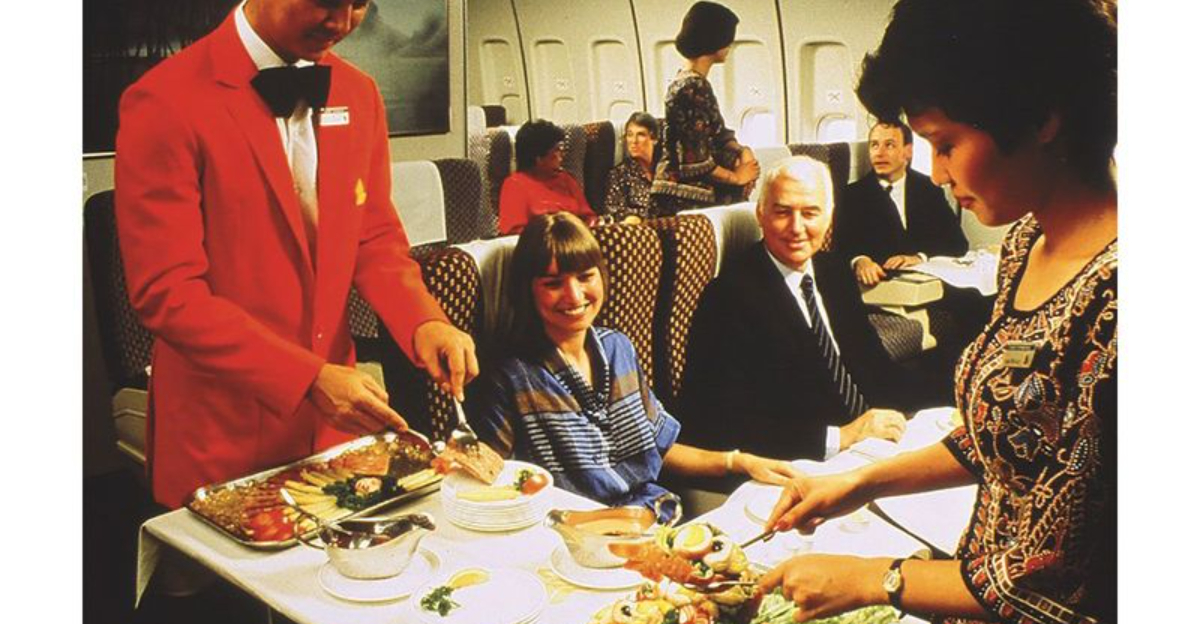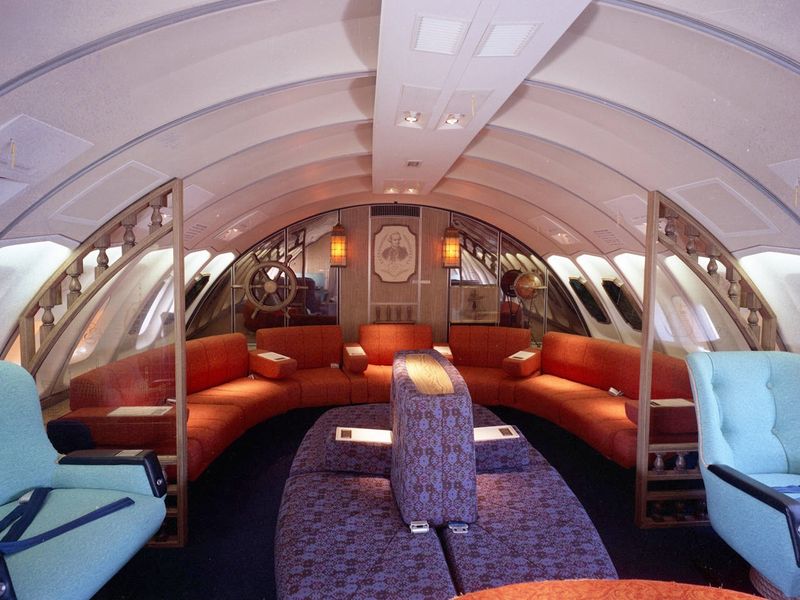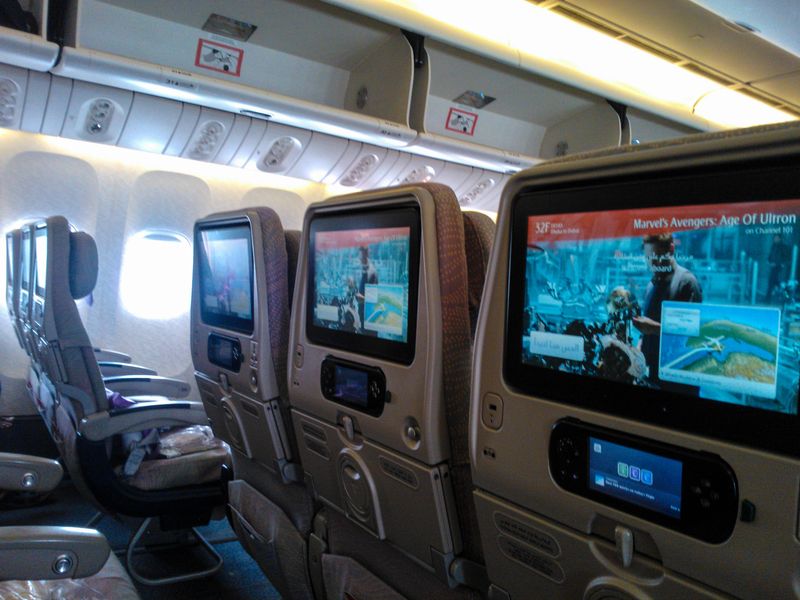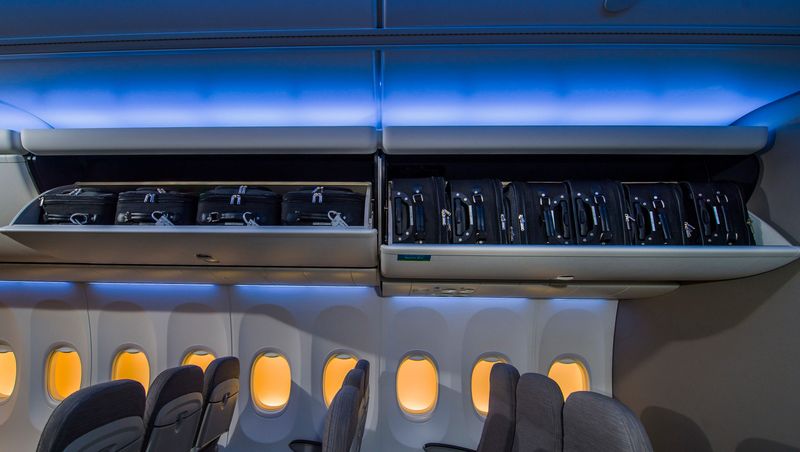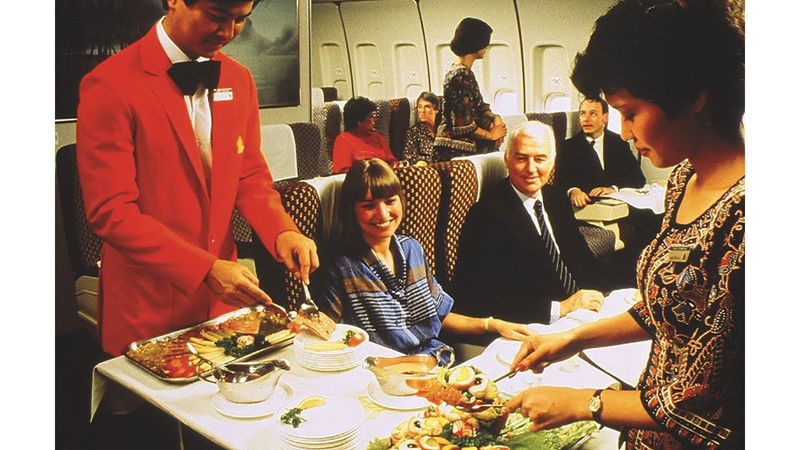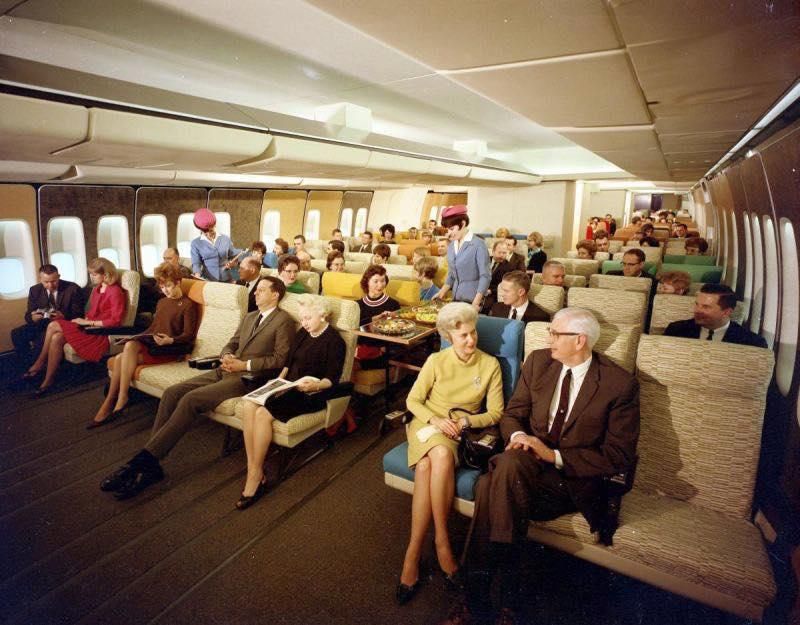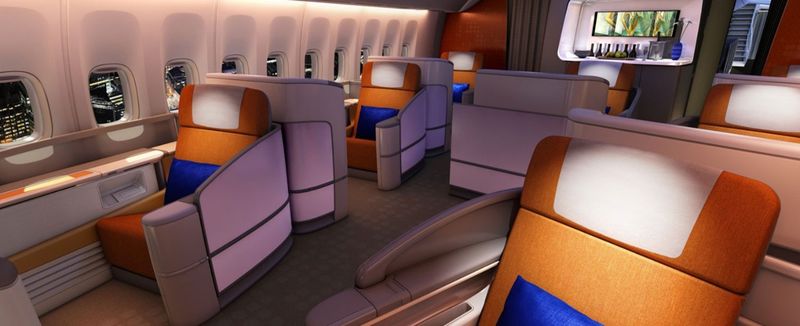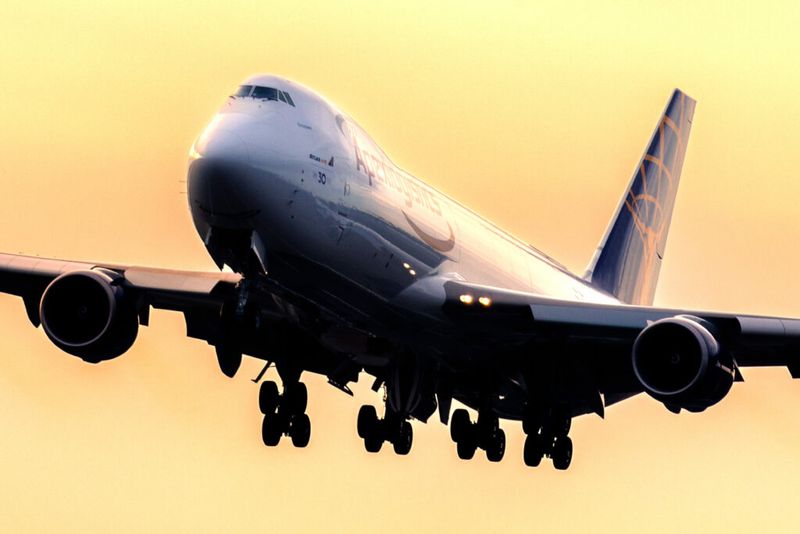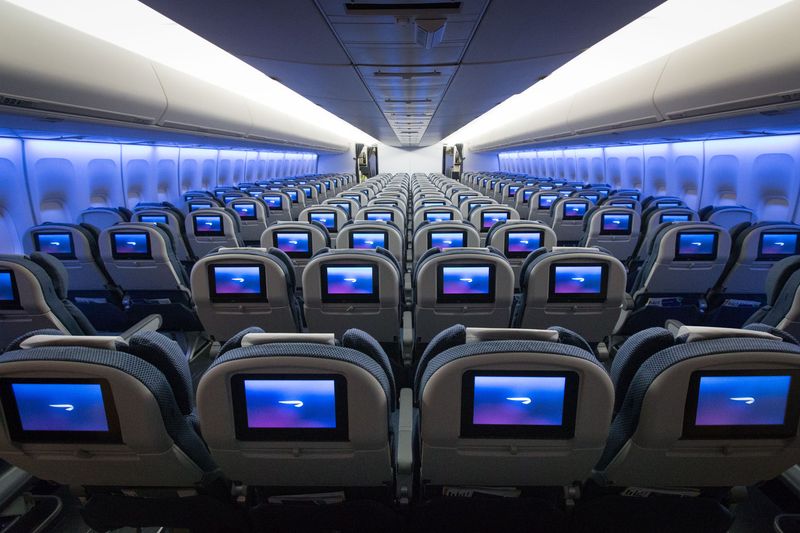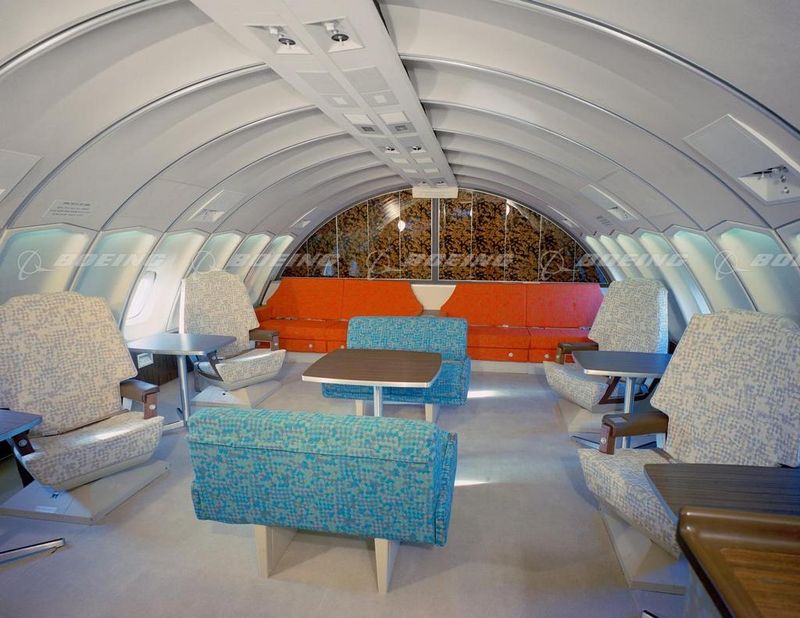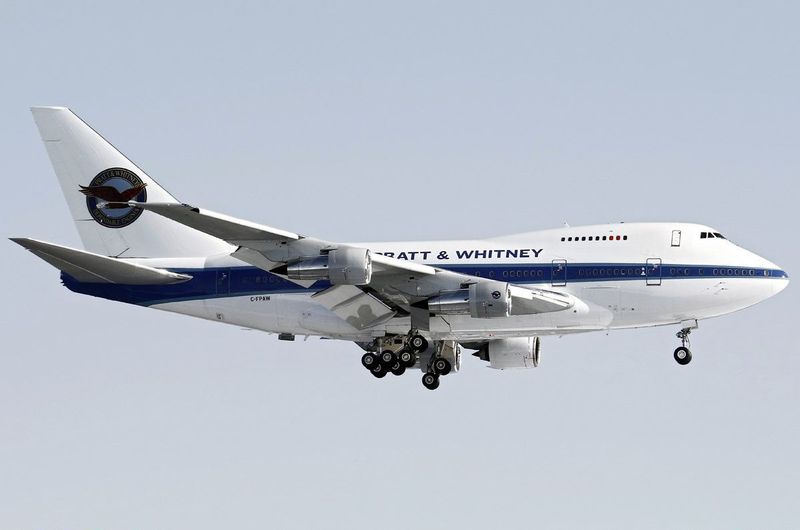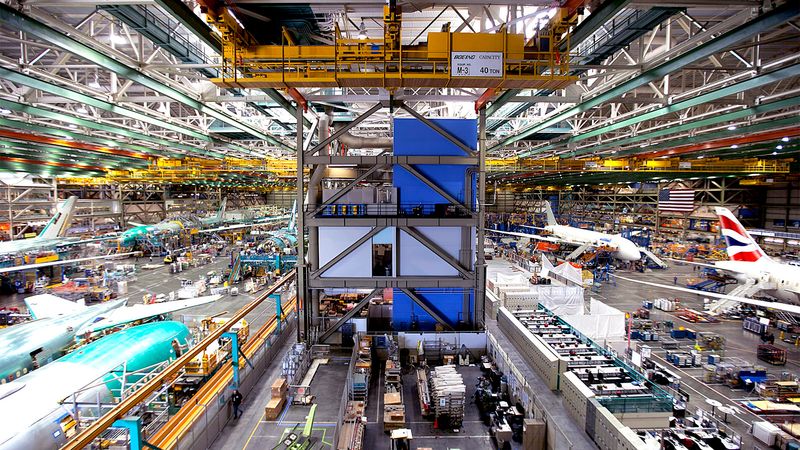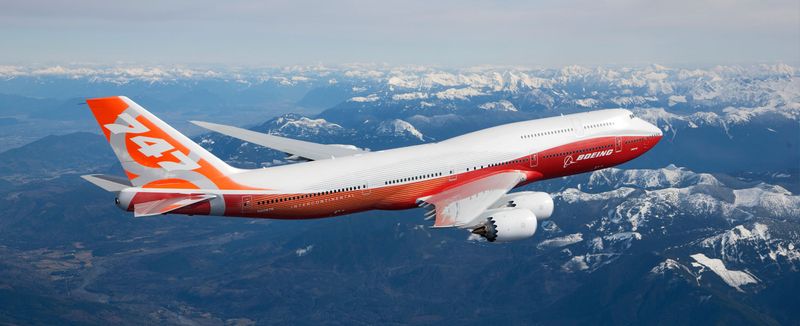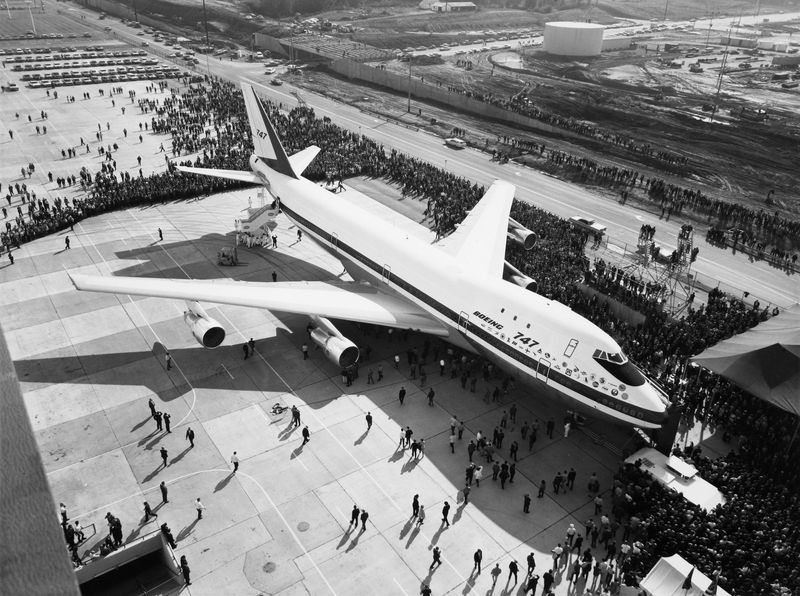When the Boeing 747 took flight in the late 1960s, it didn’t just revolutionize air travel—it redefined it. With its massive size, innovative design, and passenger-focused amenities, the “Queen of the Skies” became an icon of modern aviation. Here are 13 standout features that made the 747 a legend:
1. Sky-High Ceilings
The Boeing 747 introduced passengers to the luxury of sky-high, 8-foot ceilings. Imagine stepping into a plane where you could stand tall without bumping your head. This was a first in commercial airliners, providing a sense of freedom and comfort that was unprecedented. The spaciousness made long-haul flights much more bearable, especially for those who might feel claustrophobic in tight spaces. Standing to stretch was no longer a privilege but a norm. This innovation not only improved passenger comfort but also set a new standard in aircraft design for other manufacturers to aspire to.
2. In-Flight Entertainment
The 747 brought entertainment to new heights with its in-flight offerings. Back in the day, enjoying wide-screen, full-color movies with stereophonic sound was a game-changer. Passengers could also select from music and other programs right from their seats. This feature transformed flights into immersive experiences rather than mere journeys. The allure of watching a movie at 35,000 feet was a novel idea, turning airborne travel into something anticipated rather than endured. Such innovations marked a shift in how passengers perceived flying, making it more enjoyable and something to look forward to.
3. Overhead Luggage Compartments
With the introduction of convenient overhead luggage compartments, the Boeing 747 changed cabin storage forever. No more tripping over bags, as carry-ons found a home above the seats. These bins provided ample space, ensuring a clutter-free environment with more legroom for travelers. It wasn’t just about storage; it was about creating a tidier, more enjoyable cabin experience. The ease of accessing one’s belongings mid-flight was revolutionary, adding a layer of convenience previously missing in air travel. This change in design has since become a staple in modern aircraft, enhancing passenger comfort significantly.
4. Gourmet Meals
Dining on a Boeing 747 was an experience in itself, thanks to its ultra-modern galleys. Passengers indulged in full-course gourmet meals that rivaled restaurant quality. The transformation of inflight dining turned meals into events. With chefs preparing dishes between passenger sections, each meal journeyed from kitchen to tray with a promise of delight. At 35,000 feet, enjoying a well-cooked meal elevated the overall travel experience. It was more than just eating; it was a taste of luxury in the skies, making every passenger feel valued and pampered.
5. Spacious Seating
The 747’s spacious seating arrangements were a dream come true for travelers. With extra-wide, comfortable seats laid out in two, three, or even four-abreast configurations, it catered to all types of passengers, from solo travelers to families. This flexibility in seating allowed for more relaxed and enjoyable flights. The roominess meant that passengers could recline and rest, transforming long-haul flights into restful journeys rather than exhaustive ordeals. It wasn’t just about space; it was about enhancing the passenger experience, making air travel more appealing and user-friendly.
6. Double Aisles
The introduction of wide double aisles in the 747 allowed passengers to move freely throughout the cabin. Gone were the days of squeezing past fellow travelers; the spacious aisles facilitated easy navigation. Numerous cross aisles added to this convenience, eliminating bottlenecks during boarding and disembarking. This feature not only improved the flow of passengers but also reduced anxiety associated with crowded spaces. The design of the aisles was about more than just movement; it was about providing a stress-free, enjoyable flight experience that prioritized passenger comfort and convenience.
7. Global Reach
Capable of flying to 58 major destinations across the globe, the Boeing 747 truly connected continents. This aircraft enabled travelers to reach far-flung locales, from bustling business hubs to exotic vacation spots. With its extended range, the 747 opened up new opportunities for global travel, making the world more accessible than ever before. It wasn’t just about reaching a destination; it was about bridging cultures and economies, turning the vast world into a smaller, more interconnected community. The 747’s global reach continues to impact travel and commerce significantly.
8. Passenger Volume
Since its debut, the Boeing 747 has carried millions, exemplifying reliability and popularity. This aircraft became synonymous with large-scale air travel, moving vast numbers of people efficiently. Over hundreds of millions of miles, its reliability was consistently demonstrated, earning trust from passengers worldwide. The 747 wasn’t just an aircraft; it was a vehicle of connection, shrinking distances between loved ones and business associates. Its ability to transport so many people so efficiently remains a testament to its engineering marvel, forever changing how the world views air travel’s potential.
9. Innovative Design
The 747’s innovative design set it apart, especially with its distinctive upper deck. Originally intended as a lounge, this feature offered extra seating and became iconic. The upper deck was more than a design quirk; it was a bold statement of luxury and innovation. It provided a unique space for passengers to relax, making flights more enjoyable. This design choice also increased the aircraft’s capacity, demonstrating how aesthetics and functionality could harmoniously coexist. The upper deck remains one of the most recognizable features in aviation, a testament to the 747’s groundbreaking design.
10. Advanced Engineering
The engineering marvel of the Boeing 747 was powered by four Pratt & Whitney JT9D turbofan engines. These engines provided approximately twice the power of previous commercial jet engines, making the 747 both powerful and efficient. The innovation in engine design allowed the aircraft to carry more passengers further, faster. This leap in engineering prowess not only set new standards for performance but also showcased the possibilities of what commercial aviation could achieve. The powerful engines were a cornerstone of the 747’s success, demonstrating technological advancement and foresight.
11. Massive Manufacturing Facility
The production of the Boeing 747 took place in a plant near Everett, Washington, which became the world’s most voluminous building. Enclosing 160 million cubic feet, this facility was a marvel in itself, reflecting the scale and ambition behind the 747 project. The size of the facility mirrored the ambition of the aircraft it produced, setting the stage for the mass production of one of aviation’s most iconic planes. It wasn’t just a building; it was a symbol of industrial capability and the innovative spirit that propelled the 747 from dream to reality.
12. Enhanced Safety Features
Safety was paramount in the design of the Boeing 747, featuring multiple redundant systems and advanced avionics. These enhancements set new standards for flight safety, ensuring passenger confidence. The redundancy meant that even if one system failed, backup systems would ensure continued safe operation. The 747’s safety features were a reassurance for travelers, knowing that their well-being was prioritized. This dedication to safety not only elevated the 747 to the forefront of aviation but also established new benchmarks for future aircraft designs, reinforcing the importance of innovation in ensuring passenger safety.
13. Cultural Icon
The Boeing 747 became more than just an aircraft; it was a cultural icon of the Jet Age. Representing progress, luxury, and the shrinking global community, its impact transcended aviation. The 747 symbolized a new era of travel, where the world felt smaller and more connected. Its presence in films, literature, and art reinforced its iconic status, making it a recognizable symbol of modernity and aspiration. The cultural footprint of the 747 is enormous, illustrating how a single aircraft could capture the spirit of an age and influence generations of travelers and dreamers.
